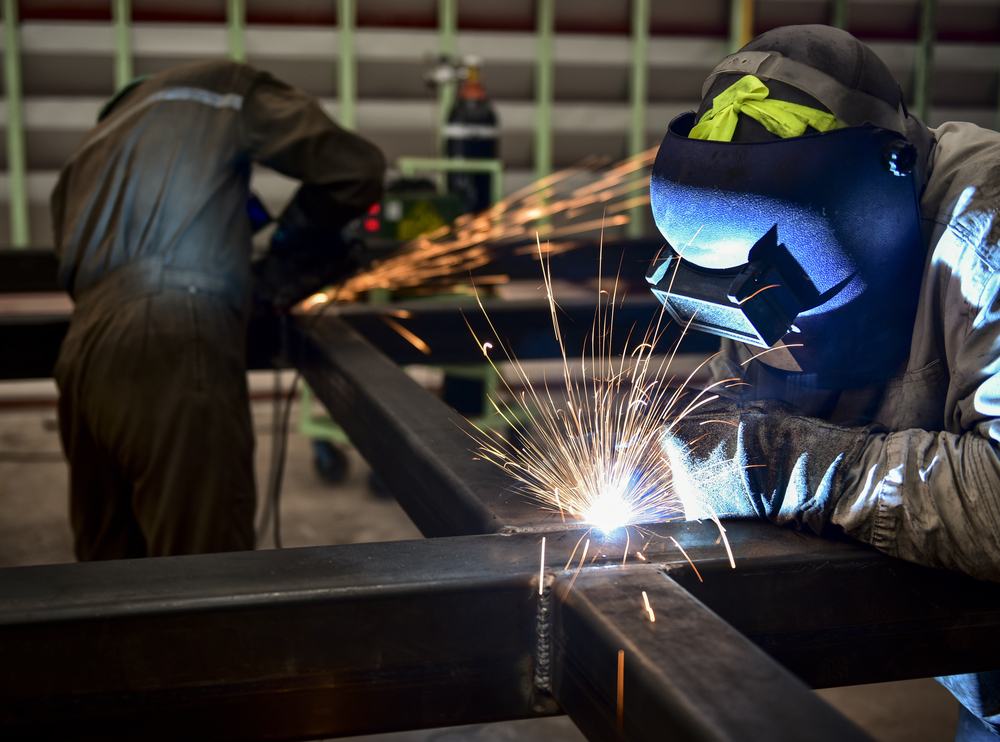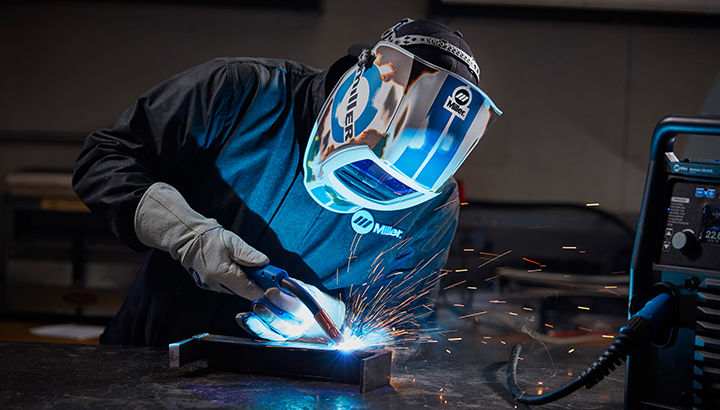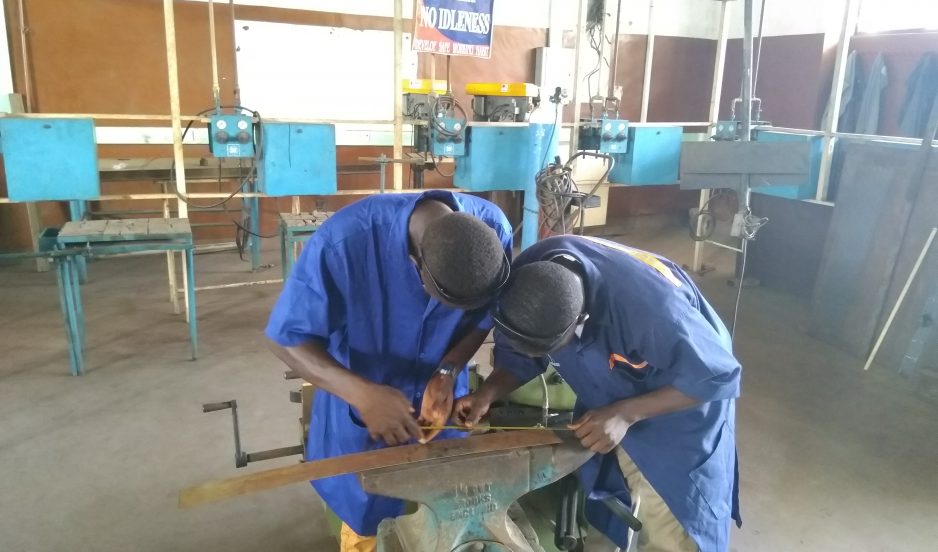Typical Welding Repair Service Issues and How to Address Them Properly
Welding repair services commonly experience a series of issues that can threaten the honesty of the final item. Usual problems consist of poor infiltration, porosity, and imbalance, amongst others. Each defect offers distinct obstacles that require details strategies for resolution. Understanding these concerns is vital for welders aiming to enhance their results and skills. This discussion will discover these typical welding repair service problems and efficient methods to resolve them.
Poor Penetration
Inadequate infiltration occurs when the weld metal fails to completely fuse with the base product, leading to weak joints and possible architectural failings. This issue typically comes from not enough warmth input, incorrect electrode angle, or inappropriate welding speed. Welders might run into inadequate penetration due to a mistake of the needed criteria for a particular material thickness or type. Additionally, contamination on the base material's surface area can hinder efficient bonding, exacerbating the problem. To attend to inadequate penetration, welders should guarantee suitable settings on their devices and maintain a clean work surface area. Regular inspection of welds is advised to recognize any kind of shortages early, permitting timely modifications and the prevention of endangered architectural stability in bonded assemblies.
Porosity
Porosity is a typical problem in welded joints that shows up as small gas bubbles caught within the weld steel. This issue can compromise the stability of the weld, causing reduced strength and possible failure under tension. Montana Mobile Welding and Repair Belgrade. Porosity usually emerges from contamination, moisture, or incorrect welding methods, which enable gases to run away right into the molten weld swimming pool. To attend to porosity, welders should guarantee appropriate surface area prep work, keep a clean functioning setting, and utilize appropriate welding criteria. In addition, choosing the right filler material and shielding gas can alleviate gas entrapment. Routine assessment and screening of welds can aid determine porosity early, ensuring prompt restorative activities are taken, thus maintaining the high quality and dependability of the welded framework
Misalignment
Imbalance in welding can develop from various aspects, consisting of inappropriate arrangement and thermal expansion. Understanding the root causes is crucial for reliable resolution. Numerous modification strategies are offered to straighten elements and assure architectural integrity.
Sources of Misalignment
Welding misalignment commonly originates from a variety of underlying concerns that can endanger architectural integrity. One key cause is incorrect fit-up of parts prior to welding, which can bring about voids and irregular surfaces. Variants in thermal development during the welding procedure can likewise cause distortion, especially if the products being signed up with have different coefficients of growth. Additionally, poor fixturing and securing may stop working to hold parts securely in position, bring about movement throughout welding. Improperly conserved tools, including welding machines and devices, may introduce disparities in the weld bead, more contributing to misalignment. Operator error, stemming from insufficient training or experience, can also play a substantial role in producing misaligned welds.

Correction Methods Offered
Dealing with misalignment properly needs a mix of restorative strategies tailored to the specific concerns at hand. One typical method is using jigs or components to hold parts in the proper setting during welding, making sure consistent alignment. Additionally, pre-heating the materials can help in reducing distortion and enhance fit-up. For considerable misalignment, mechanical realignment strategies, such as using hydraulic jacks or clamps, can be used to correct the setting before welding. Post-weld warm therapy might additionally be essential to eliminate anxieties brought on by misalignment. Careful evaluation and modification during the configuration stage can prevent misalignment issues from becoming significant issues, advertising a smoother welding process and improving overall architectural honesty.
Distortion
Distortion is an usual obstacle in welding that can arise from numerous variables, consisting of unequal heating & cooling. Recognizing the reasons for distortion is vital for applying reliable prevention techniques. Addressing this issue not only boosts architectural honesty yet additionally boosts the general quality of the weld.
Sources of Distortion
When subjected to the extreme warmth of welding, materials often go through changes that can bring about distortion. This phenomenon largely develops from thermal expansion and tightening throughout the welding process. As the weld area warms up, the material broadens; upon cooling, it acquires, which can produce internal stress and anxieties. Additionally, irregular heating across a work surface can intensify these stresses, resulting in warping or bending. The kind of product likewise plays a considerable role; metals with differing thermal conductivity and coefficients of growth might respond in different ways, leading to unforeseeable distortions. Poor joint layout and poor fixturing can contribute to imbalance during welding, enhancing the possibility of distortion. Recognizing these reasons is necessary for effective welding repair work and prevention methods.
Avoidance Techniques
Reliable avoidance techniques for distortion during welding concentrate on managing heat input and making certain proper joint style. Keeping a regular warmth input aids to decrease thermal expansion and contraction, which can cause distortion. Utilizing techniques such as pre-heating the work surface can also reduce the temperature level slope, promoting consistent home heating. In addition, selecting ideal joint styles, such as T-joints or lap joints, can boost security and minimize tension focus. Applying proper fixturing to safeguard the work surfaces in position even more help in maintaining alignment during the welding process. Ultimately, staggered welding series can disperse warm much more uniformly, protecting against local distortion. By using these methods, welders can greatly reduce the chance of distortion and improve the general quality of their welds.
Fracturing
Fracturing is an usual problem experienced in welding fixings, commonly arising from numerous elements such as inappropriate air conditioning rates, material option, or poor joint prep work. The occurrence of splits can substantially compromise the stability of the weld, leading to possible failures throughout procedure. To resolve this issue, welders have to initially assess the root causes, ensuring that products are suitable and appropriately selected for the details application. Furthermore, regulating the cooling rate throughout the welding process is necessary; quick cooling can generate stress and anxiety and result in cracking. Appropriate joint design and prep work also add to decreasing the danger. Implementing these approaches can improve weld quality and resilience, ultimately minimizing the probability of cracking in finished weldments.

Incomplete Fusion
A significant problem in welding repair work is incomplete blend, which happens when the weld steel does not appropriately bond with the base material or previous weld passes - Montana Mobile Welding and Repair Belgrade Welding. This defect can result in weak points in the joint, potentially endangering the stability of the welded framework. Factors adding to incomplete fusion include not enough warm input, improper welding strategy, and contamination of the surface areas being signed up with. To resolve this issue efficiently, welders ought to assure correct pre-weld cleaning check my blog and surface preparation, in addition to adjust their welding parameters to accomplish adequate penetration and blend. Routine evaluation throughout the welding procedure can also help determine insufficient fusion early, enabling prompt rehabilitative actions to enhance the general top quality of the weld
Overheating
While welding repair services can improve architectural stability, overheating presents a substantial obstacle that can bring about product destruction. Excessive warm throughout welding can alter the mechanical buildings of steels, causing decreased strength, increased brittleness, and warping. This sensation is particularly essential in high-stress applications where structural reliability is paramount. Determining overheating can involve aesthetic evaluations for staining or distortion, as well as checking temperature throughout the welding procedure. To reduce the dangers linked with getting too hot, welders must employ suitable methods, such as controlling warmth input, changing traveling rate, and utilizing ideal filler products. Additionally, implementing pre- and post-weld warmth therapies can assist recover material residential properties and improve the general quality of the repair work, making sure long-lasting performance and safety.
Frequently Asked Inquiries
What Are the Usual Signs of a Welding Defect?

How Can I Test My Welds for Quality?
To test welds for quality, go to my blog one can utilize visual assessments, ultrasonic screening, and radiographic approaches. Each technique ensures structural integrity, identifies defects, and confirms adherence to defined standards, ultimately boosting the dependability of the welded joints.
What Safety Precautions Should I Take While Welding?
When welding, one need to focus on safety and security by putting on suitable personal safety tools, making certain correct ventilation, securing flammable products away, preserving a clean work area, and recognizing environments to stop crashes and injuries.
Can I Repair a Weld Without Redoing the Entire Joint?
Fixing a weld without renovating the whole joint is feasible, depending on the damages (Welding). Strategies such as grinding, adding filler material, or making use of a welding process can efficiently address particular imperfections while maintaining the surrounding structure
What Tools Are Necessary for Efficient Welding Services?
Vital tools for effective welding fixings include a welding machine, cord brush, mill, protective equipment, clamps, and filler materials. Each tool plays a vital function in ensuring high quality and safety during the repair service process. Porosity generally arises from contamination, wetness, or inappropriate welding strategies, which allow gases to get away right into the liquified weld swimming pool. Badly conserved tools, including welding makers why not try this out and devices, might present disparities in the weld bead, further contributing to misalignment. When subjected to the intense warm of welding, materials usually undergo modifications that can lead to distortion. Cracking is an usual issue experienced in welding repairs, typically resulting from numerous factors such as inappropriate air conditioning rates, material option, or poor joint preparation. A substantial issue in welding repairs is incomplete fusion, which occurs when the weld steel does not adequately bond with the base material or previous weld passes.
Comments on “Quick tips for poor fusion from Montana Mobile Welding and Repair”